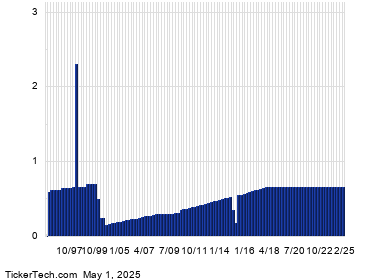Tariffs Impacting Amazon as Prices Rise for Consumers
In a swift response to President Donald Trump’s newly announced tariffs, some sellers based in China on Amazon (NASDAQ: AMZN) have begun raising their prices—often significantly. While ongoing negotiations between the U.S. and China aim to address trade concerns, the U.S.-imposed tariffs of 145% took effect earlier this month. This situation poses challenges for Amazon, particularly concerning its pricing and overall sales.
Potential Drop in E-commerce Sales
The implementation of a 145% tariff on Chinese imports represents a significant hurdle for Amazon. An estimated 60% of the products sold on its platform are imported from various countries, with one-third of those coming from China, according to Morningstar.

Image source: Amazon.
Recent data from SmartScout indicates that a quarter of sellers raising prices on Amazon in the last few weeks are Chinese. On average, their prices have climbed by 29%. Higher prices may lead certain consumers to curb their spending, and data reveals American buyers are already showing signs of hesitation. Noteworthy findings include:
- A University of Michigan survey identifies consumer sentiment at its lowest in 32 months.
- Yale’s Budget Lab estimates tariffs could burden U.S. consumers by $3,800 annually.
- A separate survey shows that 45% of Americans plan to reduce spending on non-essentials and 33% on necessities in the coming year.
In essence, rising prices from tariffs are likely leading consumers to rethink their purchasing habits, creating a potential decline in Amazon’s e-commerce sales.
Advertising Sales Face Challenges
Amazon also needs to be concerned about its advertising revenue during economic downturns. For instance, ad spending saw a 7.5% decline across the industry during the COVID-19 pandemic.
Though Amazon’s ad sales increased by 20% to $56.2 billion in 2024, now comprising nearly 9% of total sales, about $8 billion of that revenue came from China-based sellers last year. If these sellers experience financial strain from tariffs, their ad spending may diminish. Consequently, a reduction in consumer spending on Amazon could further reduce the incentive for companies to invest in advertising.
Amazon’s Strength Amid Challenges
Despite these pressures, investors may find some reassurance. The Trump administration appears to be open to negotiations that could ease trade tensions with China; recent statements suggest tariff rates may be reconsidered. Additionally, Amazon derives a significant portion of its profits from Amazon Web Services (AWS), which accounted for 58% of the company’s operating income in 2024, with a sales increase of 19%. Notably, AWS maintains a majority share of the cloud computing market at 30%, compared to 21% for Microsoft.
As a cloud service, AWS is less likely to be directly impacted by tariffs. Furthermore, as the AI cloud market is projected to reach $2 trillion by 2030, Amazon is well-positioned to take advantage of this growth.
Nevertheless, it is critical for investors to monitor developments regarding the tariffs and any shifts in consumer behavior. The current market landscape is uncertain, indicating continued volatility for Amazon’s stock in the foreseeable future.
The views and opinions expressed herein are the views and opinions of the author and do not necessarily reflect those of Nasdaq, Inc.

